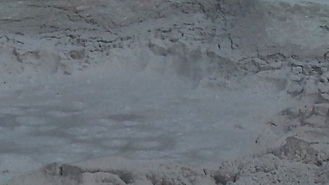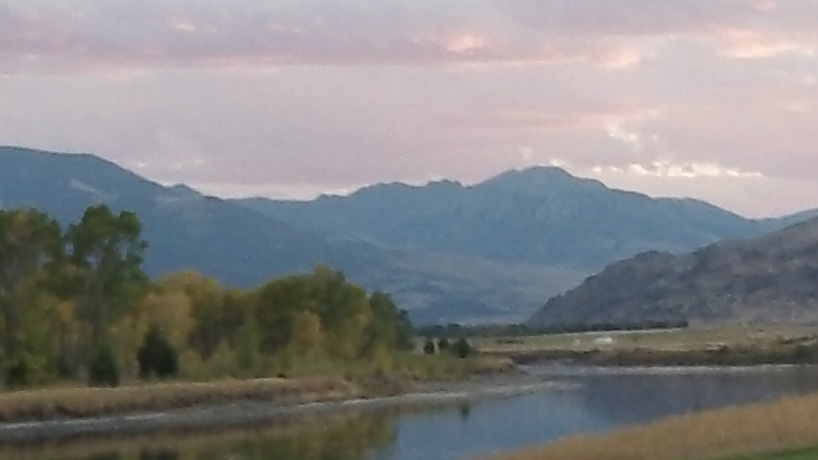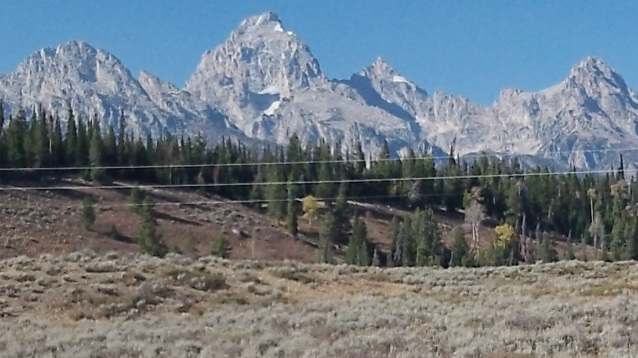Your browser does not support viewing this document. Click here to download the document.
Below is the entrance to Yellowstone National Park. You can see the Yellowstone River. Yellowstone has many mud pots and geyers like Old Faithful (video below). Yellowstone is positioned over an active volcano. Even though Yellowstone and The Tetons look different; both parks have the same ecological system. The ecological system made up of lakes, rain, air, sun and the seasons helps the growth of animals, trees and other plants living within both parks.
The Grand Tetons shown below is part of the same ecological system as the Yellowstone National Park shown above. An eclological system is plants and animals interacting with the sun, seasons, water and other minerals found in the soil and rock.
Press the blue button to learn more about plate tectonics or how The Teton mountains were made. When you see the video then click on the
Yellowstone exists above a living volcanoe. Yellowstone has mudpots and geyers. The Grand Tetons does not (doesn't) exist above a living volcanoe. The Grand Tetons does not have mudpots and geyers. The Tetons land formation did not (didn't) develop from a volcano like Yellowstone National Park did. The Grand Tetons developed through a different force of nature. A force of nature is how the land changes through erosion, volcanoes or movement of plates within the earth. Large plates inside the earth collided. When the collision happened, millions of years ago, the land moved upward forming mountains. The highest mountain peak is 13,775 feet. The Grand Tetons are 6 to 9 million years old. Whereas, Yellowstone National Park is younger becaue it started to form after the Tetons.
Yellowstone National Park: Mudpots, Geysers

Mudpots have little water. Mudpots have acid and minerals. The mudpots bubble at a very hot temperature. The acid and minerals decomposes or eats the rock surrounding the mudpot and changes the rock to clay and mud.



